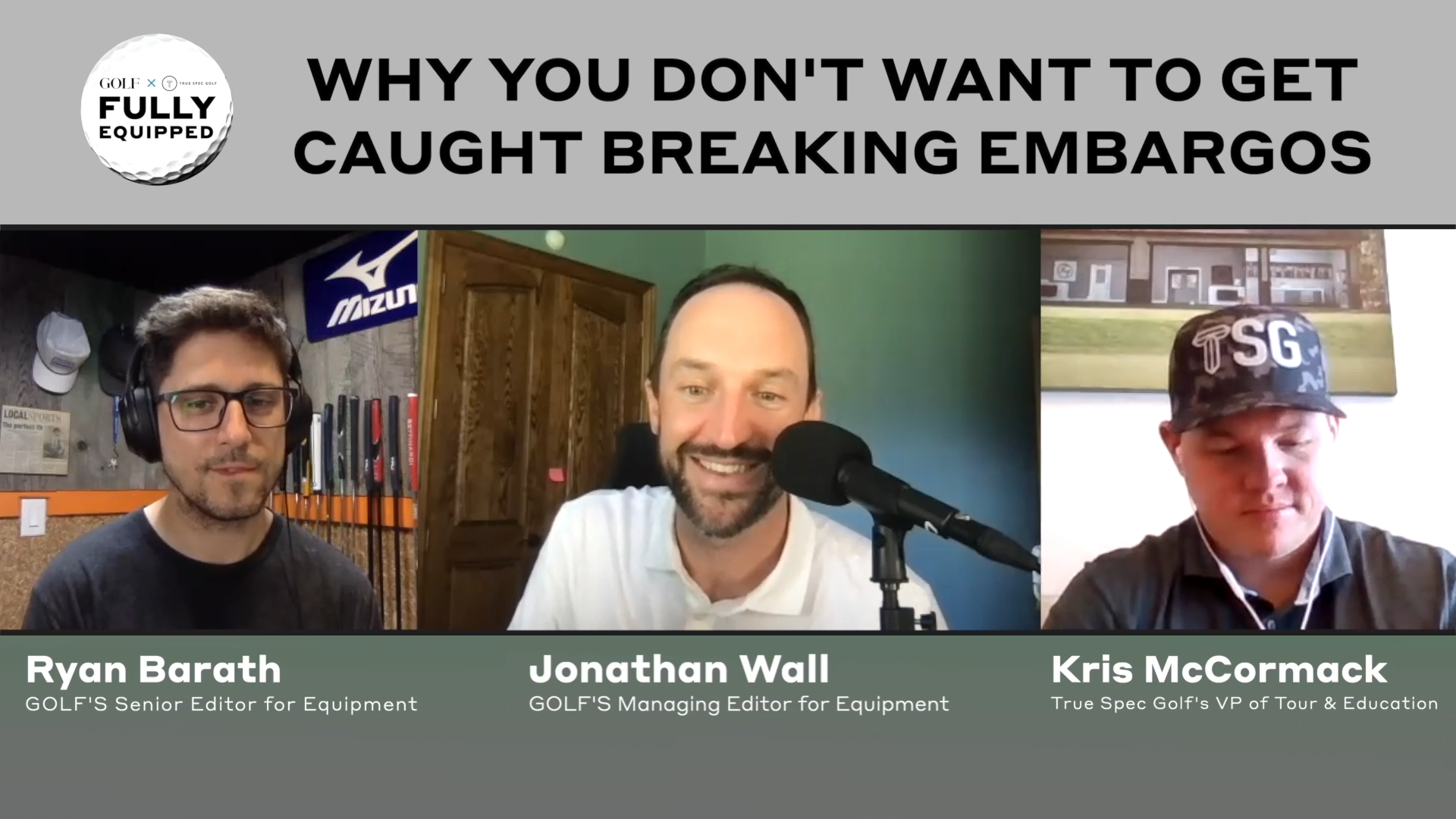
Jason Lusk’s borrowed clubs provided a touch of needless apprehension before the first round of the U.S. Hickory Open at Mission Inn Resort & Club in Florida. (Peter Flory/Golfweek)
David Dusek, Golfweek’s director of golf equipment coverage, nearly giggled over our Microsoft Teams chat when I mentioned I would begin my hickory journey in a national championship. Breaking 90? No way, he said. I was too reliant on the advantages of modern technology in my golf bag, he believed.
Sorry, David, but apparently I am just as bad without technology as with it. And that’s alright.
Flory, who said he has collected more than a thousand hickory clubs, arranged a borrowed set of eight clubs for me. I had two woods, five irons ranging from the equivalent of a 3-iron to a wedge, and a center-shafted putter. I couldn’t tell you what all the names of the clubs were, but somewhere in the mix was a cleek, a mashie, a mid-mashie and a niblick, I think.
Mine were all replicas, made by Louisville Golf or the esteemed Tad Moore and the like, but not nearly as elaborate as the century-old-or-older clubs that many of the competitors used. These folks will scour the internet as well as tournament swaps, estate auctions, old shops and garage sales in search of authentic hickory clubs that look like they might have belonged to either Tom Morris. A handful of experts will repair these treasured finds to a competitive state, and it’s amazing how well they perform for what is often a hunk of roughly shaped metal, covered with a lovely patina, on the end of a wooden stick with a leather grip.
No, these clubs will not produce the distance of modern gear, even when combined with a modern golf ball, which I believe all of us used in the championship’s open division. For example, I hit my modern 5-iron about 185 yards in the air, while my hickory replica of the same number produced only 155 yards. I’m not exactly a powerful player even with the modern stuff, but my average driving distance dropped from about 255 to maybe 215 with the hickories.
None of that mattered, as the El Campeón layout at Mission Inn was set up short for the tournament (keep reading for more on this). I was amazed, to be honest, at how well these hickory clubs performed. Even without the benefits of a club fitting or Trackman testing, I had stumbled upon a borrowed set that produced flawlessly straight shots when I made decent swings. By focusing on tempo and solid contact instead of some feeble attempt at speed, I was able to find the center of the clubface more often than not.
And the solid thump of persimmon was a treat. I grew up with that sound, dreaming of it in the 1980s as I made due with cheaper laminated wood drivers, and I had forgotten how pleasant it is to hear such a “thwack” instead of the high-pitched scream of modern titanium and carbon meeting urethane. I wish I had some balata balls, or even better, something made before the 1940s when golf balls were almost individual works of art.








